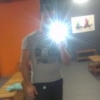Recently I did some low-level-laser therapy while there was still some C60 in my system. I hadn't recently taken it but it was still in my lipid bi-layer - I know because I'm still not getting any sunburn at all. I did the LLLT on my head, at all 20 EEG spots, having forgotten that I was C60 modified and not thinking there would be any problems.
The first few hours after the LLLT continued as is normal for me after dosing - foggy brain, less clarity etc. Then about 4 hours later clarity sets in and I feel pretty good. At this point my mind is flying all over the place (in a good way), as is usual once some time has passed after the laser dosage. About another 4 hours after that, I sit down and eat some food, then suddenly my mind lapses into a severe confusion. Previously having an animated conversation with my friend, suddenly I can barely form sentences. I feel really out of it. I say goodbye to my friend and go back to the library, but I can't really think now, so I start walking home. The walk is a couple of miles out from the library. I walk back in a strange fog, that feels wrong, different to for example an allergen induced fog - more completely disruptive of my brain function... half way back I get this intense feeling of depression, out of literally nowhere. I almost tear up in the middle of the street. This is very strange, as I'm usually a very emotionally stable person and there are really no events going on in my life that would warrant any such outburst. Plus, it was combined with the fog, which makes me think it was caused by the laser + C60. I've never ever had similar reactions to these before from just LLLT.
That night I sleep approximately 12 hours, wake up feeling groggy. Still can't think straight. Verbal fluency is shot. My mind, usually a buzzing arena of enjoyable abstractions is pretty much dead. My awareness is decreased substantially, I find it difficult to be mindful of things. I feel almost as if I'm not there. My short-term memory is also fucked. These same symptoms have continued but slowly lessened in their severity, until I thought to post this, which I think is about 5 days later. I'm still not back to my usual self, although I'd say I'm probably 80% recovered. Still, those extra percent make all the difference to higher-level thought processes. I still can't think, or communicate, like I could before I did this. And I'm still sleeping about 11-12 hours a day and not feeling fully rested when I wake. I'm thinking of discontinuing C60. This episode has scared me quite a bit, and I don't want to give up the awesome benefits of the laser. This post in general hopefully serves as a warning to those who might combine them. But I also wanted to ask a few questions...
First, do we have any idea how long C60 takes to come out of the cellular bi-layer? 1 month? 1 week?
And how could this negative interaction above occur? My biochemistry knowledge is practically non-existent, but in my confused paranoid state I obviously came up with some hypotheses to try and understand what the hell happened to me. We know that LLLT works by hormesis, in part by inducing the creation of Reactive Oxygen Species by upregulating mitochondrial action. And C60 is thought to embed both in the lipid bilayer and in the areas around mitochondria, hence why it's so useful - it neutralises free-radicals at the source. I speculated that the flood of ROS induced by LLLT would load the C60 molecules so much that they either became so negatively charged that the ones close to each other in the bilayers repelled each other to the degree that they ripped open the bilayer, causing widespread havoc across my cerebral cortex OR they became so charged they disrupted other non-oxidation related cellular processes. To be honest though that's just complete speculation. It definitely felt like something severe was going on. What do you think could have happened here? Is there any way I might speed up the process of recovery? Thanks for reading, I appreciate any input.
Edited by OpaqueMind, 02 April 2014 - 11:51 AM.
























































